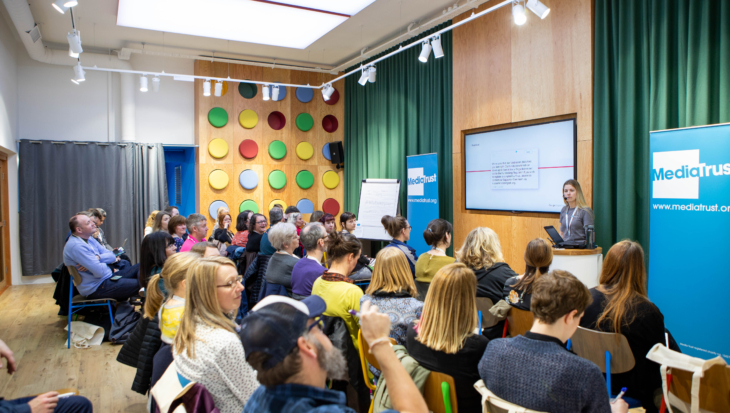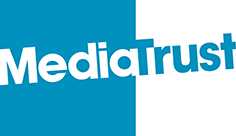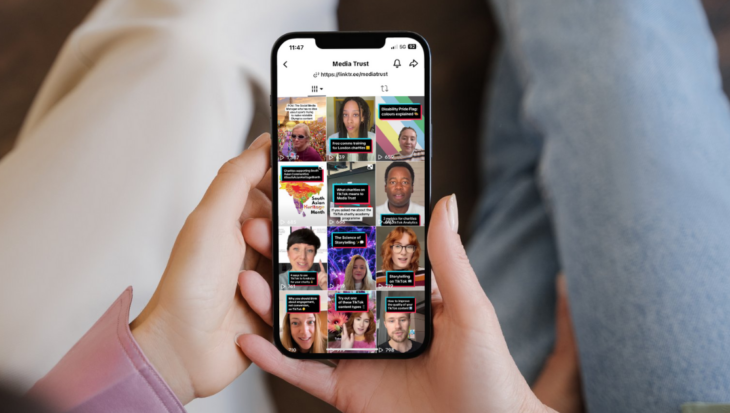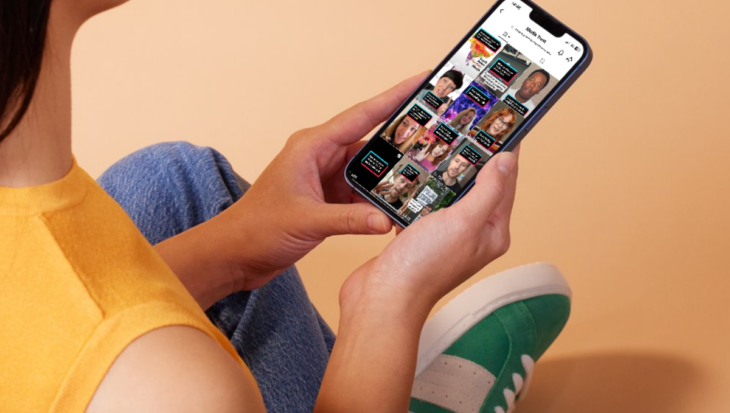Originally coined by civil rights advocate Kimberlé Crenshaw, the term ‘intersectionality’ is fast gaining traction as a hot button concept. The Coronavirus pandemic, the death of George Floyd, our rapidly changing climate and the current cost of living crisis means there is an increasing consideration for how our multiple identities overlap and create unique experiences of disadvantage for marginalised people.
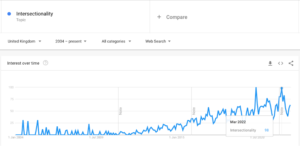
Google Trends highlights the rising interest in intersectionality – searches for have been steadily rising over the past two decades, peaking in June 2020 and March 2022.
Intersectionality isn’t just topical – it’s vital. Embedding intersectionality in your communications allows you to better reflect complex lived experiences, encourage understanding of how inequalities influence one another, and campaign for effective policy change.
So, what can you do to support more intersectional storytelling in the media? Here are three topics we have been exploring in our Intersectional Reporting Programme…
-
Identify the intersectional narratives your stories fall into
Lankelly Chase‘s recent research study, Telling a Different Story suggests that stories on multiple disadvantages tend to fall into one of three narratives when reported in the news, each with its own advantages and limitations:
Institutional Failure: This narrative focuses on how institutions and public services have failed people and impacted their quality of life, and provides opportunities for new understanding of social disadvantage.
Individual Failure: This narrative is – concerningly – sometimes known as disadvantage entertainment, which is intended for shock value. It implies that disadvantaged people are responsible for their circumstances, and is normally characterised by a lack of charity involvement.
System Failure: This narrative is characterised by a deep appreciation for the connections between disadvantages and recognises institutions, systems, and structural factors as perpetuating multiple disadvantages.
It’s important to recognise how the media frames stories on multiple disadvantages. When you understand the different narratives, you’ll see it is possible to get to the root of inequality by reframing stories to be more empathetic and reflective of lived experience. Currently charities are only contributing to around 10% of multiple disadvantage stories – what could your charity be achieving in this space?
-
Challenge your ideas on what makes ‘good’ intersectionality
There are some classic, counterproductive narratives that charities are often guilty of promoting, such as claiming we are all at risk of certain disadvantages – such as homelessness – but narratives like these can often make audiences feel fatalistic or overwhelmed.
There are approaches that allow charities to reframe the moulds intersectional stories are constrained by. Think about how your communications can appeal to our shared human right to dignity with statements like “we all deserve to be treated with respect” and challenging stereotypes through the use of inclusive imagery and case studies.
Above all else, embed your stories with the voices of those with lived experience. As charities, you have unique access to real people with real stories, and the media has a huge appetite for this as it brings their features to life.
Keep the audience in mind – complex stories or those filled with heavy jargon may only be digestible to those in your field. Impactful case studies are ones that humanise charity stories, contextualise them in the real world, and draw audiences in.
-
Collaboration is key!
We know charities are well-versed in communicating their own causes, however achieving intersectionality relies on coordinating research and experience to uncover where disadvantages overlap.
For inspiration, see the recent Broken Ladders report from The Runnymede Trust and Fawcett Society, which centres the experiences of women of colour in the workplace and explores the experiences of women from different minority groups. This report combines the expertise of these charities in race and gender equality, and ensures ‘women of colour’ is not used as an umbrella term but explored in-depth to reveal specific barriers.
In Telling A Different Story journalists highlight the ‘magic formula’ for stories on multiple disadvantage – a combination of evidenced statistics or data plus a high-quality case study. Signposting to other charities’ research whilst discussing intersectionality also ensures you are backing up your arguments with data – and this is a vital component in creating an impactful intersectional story for the media.
Like for many in the UK, it is a difficult time for the sector as we navigate rising costs, so there has never been a better reason to pool our resources and support one another to maximise impact and reach to achieve equality!
Fahmida Miah is the Programme Manager for Intersectional and Inclusive Reporting. To find out more about the programme, visit the Intersectional Reporting Programme webpage.
